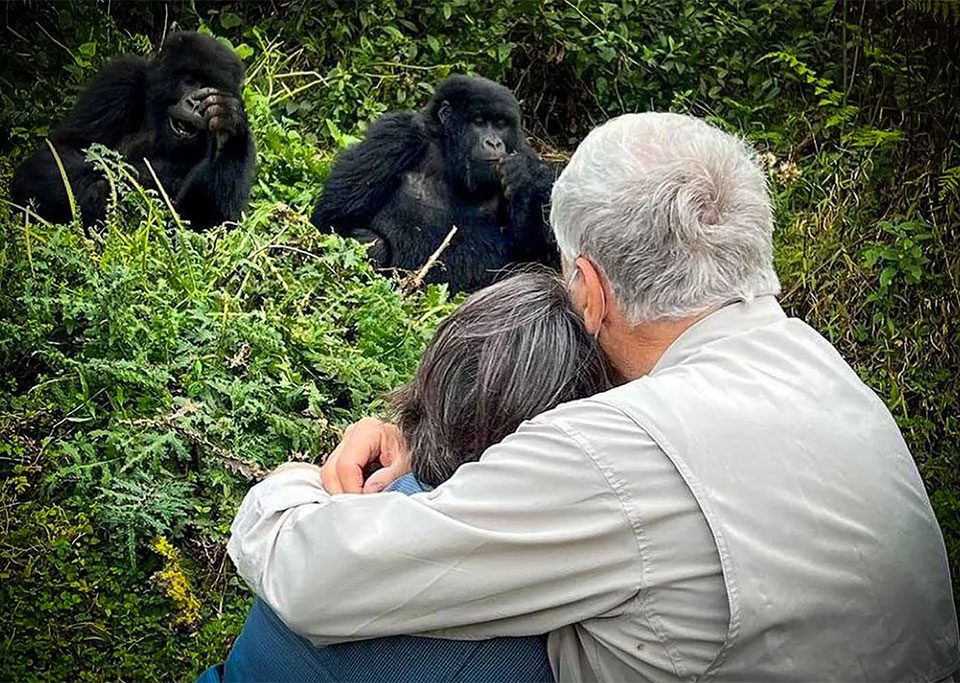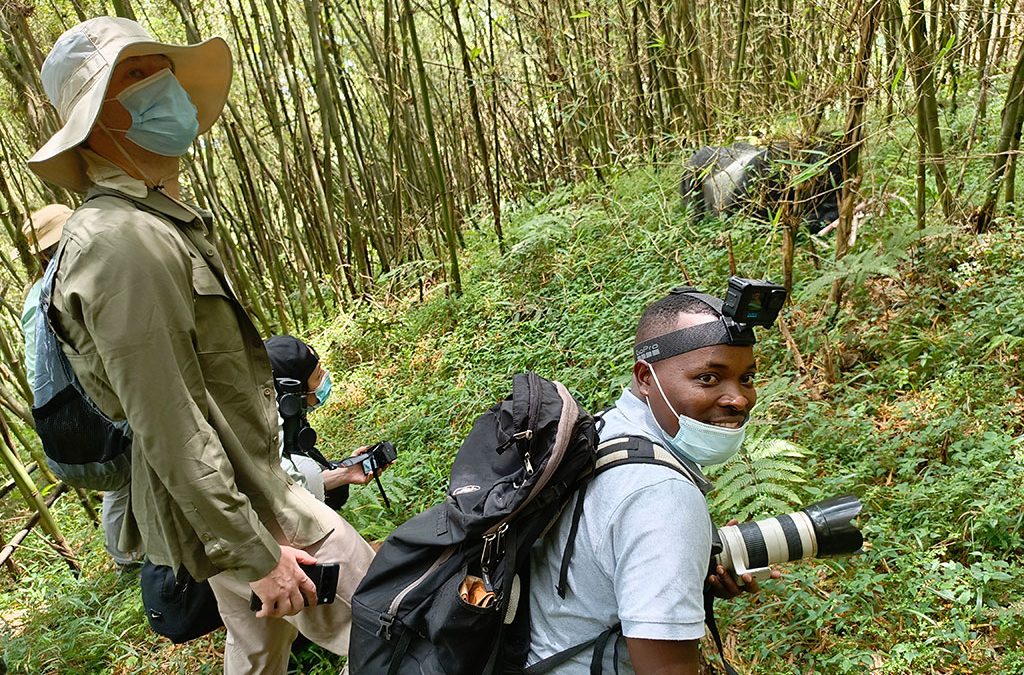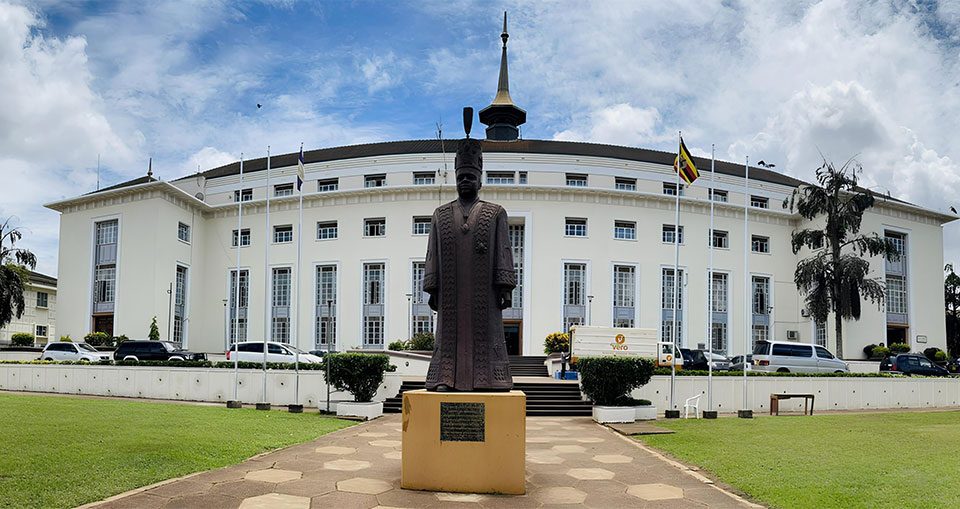- EXPERT'S HELP
- +256789210067
- +256200955001
- info@kenlinktours.com
Uganda or Rwanda Gorilla Safaris which is better
Uganda or Rwanda Gorilla Safaris which is better. When it comes to gorilla trekking in East Africa, two countries immediately stand out — Uganda and Rwanda. Both nations offer world-class gorilla trekking experiences that allow visitors to come face-to-face with one of the world’s most endangered and majestic creatures — the mountain gorilla. These encounters are powerful, emotional, and unforgettable. However, deciding whether to trek in Uganda or Rwanda can be challenging. Each destination has its unique strengths, and the better choice depends largely on your budget, fitness level, time, and travel preferences. Let’s explore the two countries in depth to help you make the best decision for your gorilla trekking safari.
1. Gorilla Trekking Locations
Uganda: Bwindi and Mgahinga National Parks
Uganda is home to nearly half of the world’s remaining mountain gorillas. The two main trekking destinations are Bwindi Impenetrable Forest National Park and Mgahinga Gorilla National Park, both located in the country’s southwestern region. Bwindi alone hosts more than 20 habituated gorilla families spread across several sectors including Buhoma, Rushaga, Nkuringo, and Ruhija. Mgahinga, though smaller, is equally enchanting, offering gorilla encounters amid volcanic slopes and bamboo forests.
Rwanda: Volcanoes National Park
Rwanda’s gorilla trekking takes place in Volcanoes National Park, which forms part of the Virunga Conservation Area. The park is home to around 12 habituated gorilla families. Volcanoes National Park offers a more compact trekking experience, with gorillas living within a relatively small, easily accessible area, making it highly convenient for visitors.
2. Cost of Gorilla Trekking Permits
The price of gorilla trekking permits is one of the most decisive factors for many travelers.
In Uganda, a gorilla trekking permit costs USD 800 per person for foreign non-residents. Meanwhile, in Rwanda, the permit is priced at USD 1,500 per person. This significant price difference makes Uganda a more budget-friendly destination for most travelers, particularly those seeking mid-range or longer multi-park safaris.
However, Rwanda’s higher permit cost is part of its strategy to maintain a low-volume, high-value tourism model that prioritizes conservation and luxury experiences. Therefore, if budget is your primary concern, Uganda offers much better value for money, but if you prefer a more exclusive, luxury experience, Rwanda may be worth the extra cost.
3. Accessibility and Travel Time
Uganda: Longer but Scenic Journey
The main disadvantage for many travelers visiting Uganda is the long travel distance from the international airport to the gorilla trekking parks. The journey from Kampala or Entebbe to Bwindi or Mgahinga typically takes about 8 to 10 hours by road, though the route passes through lush countryside, lakes, and traditional villages, offering great sightseeing along the way. Alternatively, domestic flights from Entebbe to airstrips near Bwindi (such as Kihihi or Kisoro) can reduce travel time to about 1 hour.
Rwanda: Quick and Convenient Access
Rwanda, on the other hand, offers unmatched accessibility. Volcanoes National Park is only 2 to 3 hours’ drive from Kigali International Airport, allowing visitors to trek gorillas even on a short three-day trip. This makes Rwanda ideal for travelers with limited time or those combining gorilla trekking with other African destinations such as Kenya or Tanzania. If convenience and short travel times are top priorities, Rwanda clearly has the advantage.
4. The Trekking Experience
Uganda: Adventure and Diversity
Uganda’s gorilla trekking experience is often described as more adventurous. The dense terrain of Bwindi Impenetrable Forest is rugged, steep, and thickly vegetated, giving trekkers a truly wild and immersive jungle experience. Depending on where the gorilla family is located, treks can last anywhere from 1 hour to over 6 hours, involving challenging climbs and descents.
The rewards, however, are immense. The diversity of Bwindi’s forest — filled with butterflies, monkeys, and birds — makes the journey itself as memorable as the gorilla encounter. Mgahinga’s treks are slightly easier and offer stunning views of the Virunga Volcanoes, making them a great alternative for those seeking shorter walks.
Rwanda: Easier and Well-Organized Treks
Trekking in Volcanoes National Park is generally easier. The park’s terrain consists mainly of open bamboo forests and volcanic slopes that are less dense compared to Bwindi. Treks usually take between 1 and 4 hours, depending on the location of the gorilla group. The trekking process in Rwanda is well-organized, with clear trails and experienced rangers ensuring a smooth experience. For travelers who prefer shorter, less strenuous hikes or those who are older or less fit, Rwanda is the better option.
5. Scenery and Photography
Both Uganda and Rwanda offer magnificent scenery, but the landscapes differ slightly.
Uganda offers a dense, ancient rainforest atmosphere. The forest’s misty valleys, waterfalls, and thick vegetation create dramatic photographic opportunities.
Rwanda, with its open bamboo forests and volcanic backdrops, provides wider, clearer photographic views of gorillas and the surrounding landscapes.
If you’re looking for deep, raw jungle imagery, Uganda is ideal. If you prefer picturesque views and easy-to-capture moments, Rwanda’s Volcanoes National Park provides perfect lighting and accessibility.
6. Accommodation Options
Uganda: Variety for All Budgets
Uganda caters to all kinds of travelers. Around Bwindi and Mgahinga, there is a broad range of accommodation options — from budget lodges and community homestays to luxurious eco-lodges. Travelers can find good comfort at affordable prices, which is ideal for those seeking value without compromising experience. Many lodges also support local communities, offering authentic cultural interactions.
Rwanda: Premium Luxury Experience
Rwanda, on the other hand, focuses more on luxury tourism. Around Volcanoes National Park, visitors will find some of Africa’s most opulent lodges, such as Bisate Lodge and Sabyinyo Silverback Lodge. These accommodations combine world-class comfort with breathtaking views of the Virunga Volcanoes. For travelers who prefer high-end experiences and personalized service, Rwanda leads in luxury hospitality.
7. Other Activities and Wildlife Opportunities
Uganda: Rich and Varied Safari Experiences
Uganda is often called the “Pearl of Africa” for good reason. Beyond gorilla trekking, the country offers an incredible variety of wildlife and cultural experiences. Visitors can track chimpanzees in Kibale Forest National Park, enjoy game drives and boat safaris in Queen Elizabeth National Park or Murchison Falls National Park, and experience cultural encounters with local communities. Bird enthusiasts will also be delighted by Uganda’s more than 1,000 bird species. This makes Uganda perfect for travelers who want a comprehensive safari combining primates, wildlife, and culture.
Rwanda: Compact and Focused Experience
Rwanda’s tourism offerings are more compact but high in quality. After gorilla trekking, visitors can explore Akagera National Park for a traditional Big Five safari or visit Nyungwe Forest National Park for chimpanzee tracking and canopy walks. However, Rwanda’s smaller size means shorter itineraries and fewer park options compared to Uganda.
8. Permit Availability and Trek Success
Uganda offers more daily gorilla permits due to its larger gorilla population and multiple trekking regions. This means travelers have a higher chance of securing permits, even when booking closer to their travel dates. Rwanda has fewer gorilla families, which limits the number of permits available daily, so early booking is strongly advised.
In both countries, the success rate of gorilla sightings is extremely high, almost guaranteed at over 98%, thanks to expert rangers and trackers who monitor the gorillas’ movements daily.
9. Conservation and Community Involvement
Both Uganda and Rwanda are deeply committed to conservation. The funds from gorilla permits contribute directly to protecting gorillas and their habitats. Additionally, local communities living around the parks benefit from a share of the tourism revenue, encouraging them to participate in conservation efforts.
Rwanda’s higher permit price supports its low-impact, high-value model, ensuring fewer tourists and more direct conservation funding. Uganda’s larger number of visitors helps spread benefits across more communities and conservation projects. In both destinations, gorilla tourism has been instrumental in increasing gorilla populations and improving local livelihoods.
10. Best Time to Visit
The best time to go gorilla trekking in both Uganda and Rwanda is during the dry seasons, which run from June to September and December to February. During these periods, trails are less muddy and trekking conditions are more favorable. However, gorilla trekking can be done year-round, as the forests remain lush and green throughout the year.
11. Which Country Should You Choose?
Choose Uganda If:
You are traveling on a moderate budget but still want a top-tier gorilla experience.
You enjoy adventure and don’t mind longer treks through thick forest.
You want to combine gorilla trekking with other wildlife safaris, cultural tours, or chimpanzee tracking.
You prefer more variety in accommodation and flexible itinerary options.
Choose Rwanda If:
You have limited time and want a quick, easily accessible trek.
You prefer a smoother, more organized experience with shorter hikes.
You are willing to spend more for premium lodges and exclusive experiences.
You want minimal travel distances and maximum comfort.

Request for a Quote
Start planning your adventure trip today with a professional expert available to help you 24/7. Encounter Africa on your own terms.
Request a QuoteDISCOUNTED GORILLA SAFARIS IN UGANDA




Gorilla Trekking Adventures
Embark on a fascinating gorilla trekking safari in Uganda and Rwanda with Kenlink Tours. Witness majestic mountain gorillas up close in their natural habitat, guided by experts for a once-in-a-lifetime adventure through lush rainforests and scenic landscapes.
READ MOREWildlife Encounter Safaris
Embark on iconic wildlife safaris in East Africa with Kenlink Tours. Discover the Big Five in vast savannahs, witness the Great Migration, and explore pristine national parks. Our expertly guided adventures promise unforgettable encounters with nature, rich cultural experiences, and seamless travel across Uganda, Kenya, Tanzania, and Rwanda.
READ MOREOther Safaris you may Love











